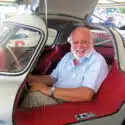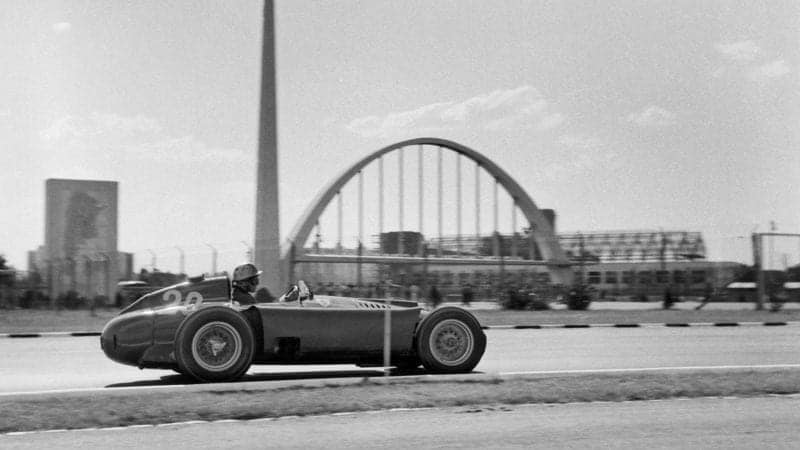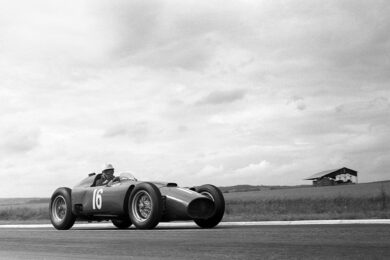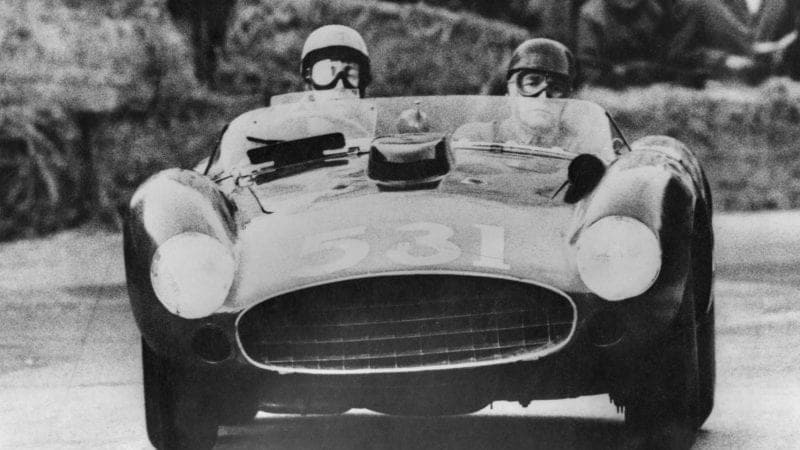Established Franco-American driver Harry Schell latched on. ‘Fon’ bought a second-hand Ferrari 250MM which they co-drove in the ’54 Buenos Aires 1000km and Sebring 12-Hours. A new Maserati A6GCS/53 followed and factory tester Guerrino Bertocchi spent time tutoring ‘Fon’ on how to drive it. He was enthralled, privy now to the art of heel-and-toe. At Le Mans he led the 2-litre class before retirement and then scored his first road-racing win at Metz.
His mother subsequently bought him a sports OSCA which he took to the German GP meeting at Nürburgring, where in practice Maserati’s driver Onofre Marimon crashed fatally. De Portago had counted him as a friend. Badly shaken, ‘Fon’ still raced next day but crashed, and was scooped into an ambulance. ‘Fon’ objected, thumped the driver, dumped him in the back, and drove back to the paddock with the seat hanging out of his trousers. His crash? ‘The Porsches were bumping me in the corners. Of course I bumped them back. It worked very well until I got behind Herrmann the leader… that’s how I went off.” Typically, that night found him in the casino at Bad Neuenahr, his bruises developing nicely. He won $10,000 which he invested in a new sports-racing Ferrari Monza, which was promptly shipped to Mexico for the Carrera.
There, bad fuel burned pistons. At Nassau in the Bahamas Speed Week he then won two races and placed second in a third. Enzo Ferrari paid extra attention – this client could drive. He was duly “permitted” to order a Ferrari 625A F1 car for the 1955 season and earned a quasi-works drive at Sebring. But in wet practice for the Silverstone May meeting, the 625A understeered into the bank and he broke a leg. That sidelined him until September when he co-drove a Monza with Mike Hawthorn in the Goodwood 9-Hours. It was a chastening experience: “Hawthorn is five seconds a lap faster!” But Mike liked him, coached him, and drank and womanized with him. ‘Fon’s lap times improved.
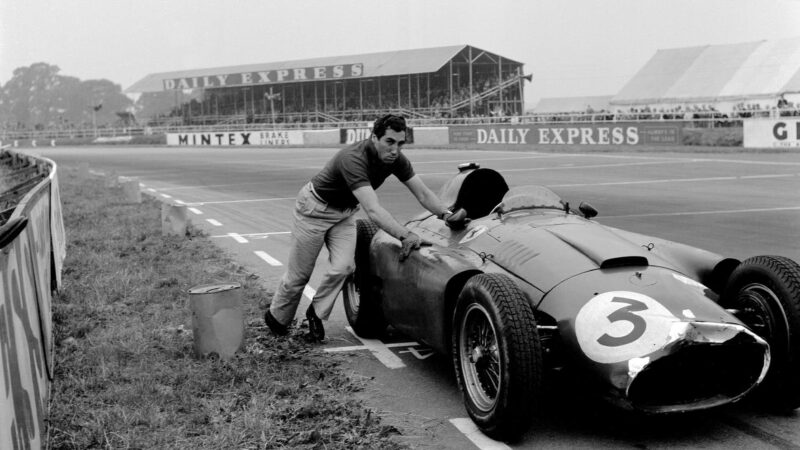
Getting his Ferrari / Lancia over the line at Silverstone in ’56
Klemantaski Collection/Getty Images
At Caracas, Venezuela, he was second behind Fangio. And then, back at Nassau, he won again by way of introducing the first Ferrari 250GT Berlinetta, solidly founding that fantastic bloodline. At winter sports time, de Portago created a Spanish bob team for the Winter Olympics trained by Ed Nelson and missed the two-man bobsleigh bronze by just 0.014sec. In the following Swiss Championships he finished second in the four-man bob, third in the two-man. So he missed the Argentine races in ’56 but was given works-backed drives at Sebring, and in Germany, France, Sweden and Italy. Mid-season, Enzo Ferrari offered him a works F1 ride to keep the team’s spare Lancia-Ferrari D50A in the hunt during the French GP at Reims.
In the British GP he was called in to hand over to Peter Collins, then limped Castellotti’s ruined D50A to the finish. In Germany he was again called in, but didn’t object: “One day someone will be asked to hand over to me”. Ferrari valued the gentlemanly side of ‘Fon’ “which always managed to emerge from the crude appearance he cultivated”.

